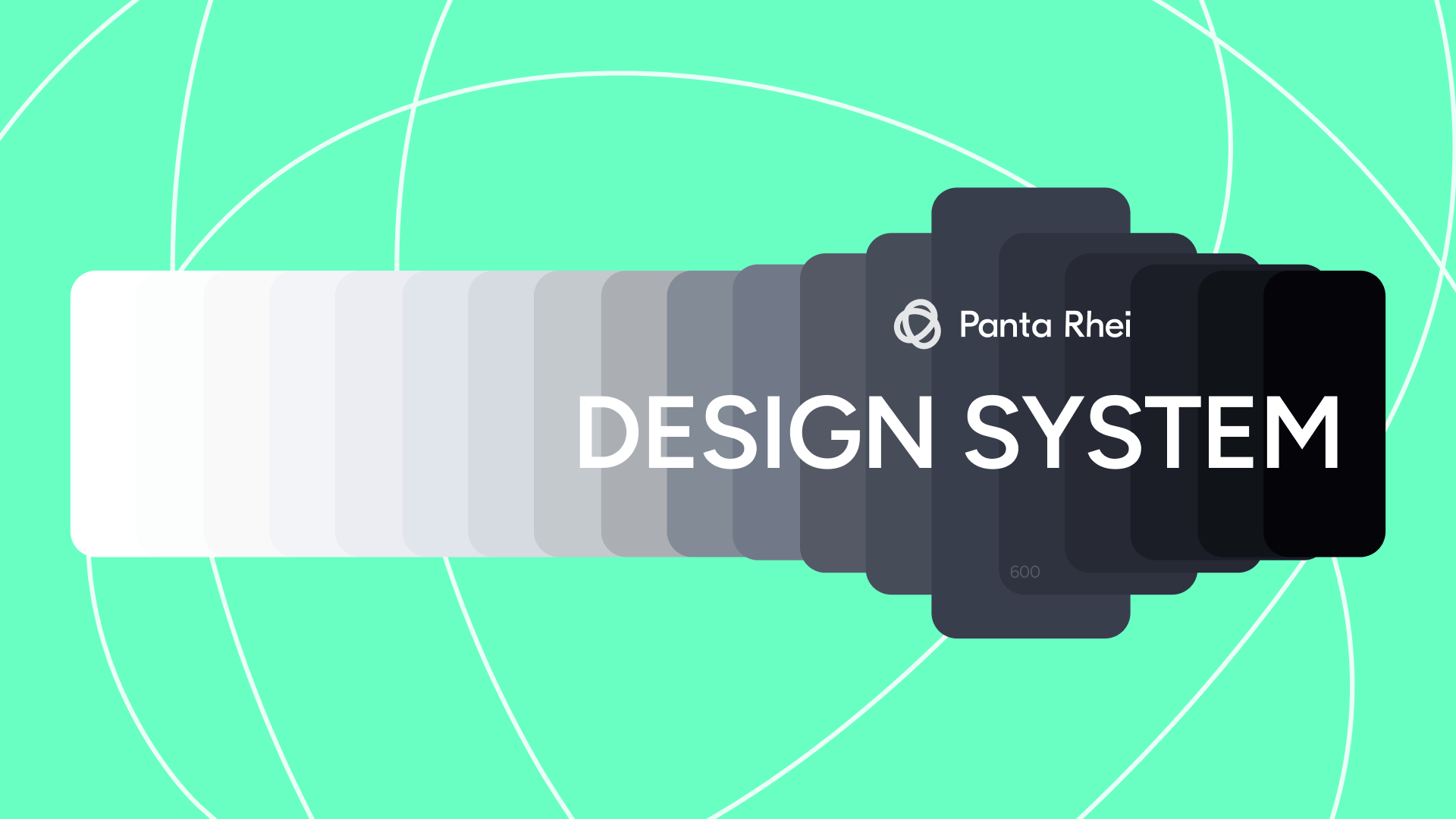low-code & design
Psychologist’s Diary app
Introduction
This application I made completely by myself using low-code development in FlutterFlow service based on Flutter framefork in Dart language. I made this application for psychologists as I am very familiar with this field and with users' problems. The founders of the Institute of Psychology, teachers and practitioners helped me.
Target Audience
Description
Interviews with 22 therapists yielded 2 groups of users: Young professionals and experienced ones. the main difference between them is the amount of free time and the need to analyse the session with the client outside the session itself.
Problems and needs of the first group:
- There is no clear structure on how to describe a session after the client
- No structure on how to describe the client and prepare for supervision with another psychologist
- Frequent loss of motivation due to the lack of an overall developmental picture
- No control over finances
Problems and needs of the second group:
- No overall financial picture
- Often get confused in notes, spend a lot of time looking for where they wrote down a note on a client.
- Often forget some details about a client after a long break.
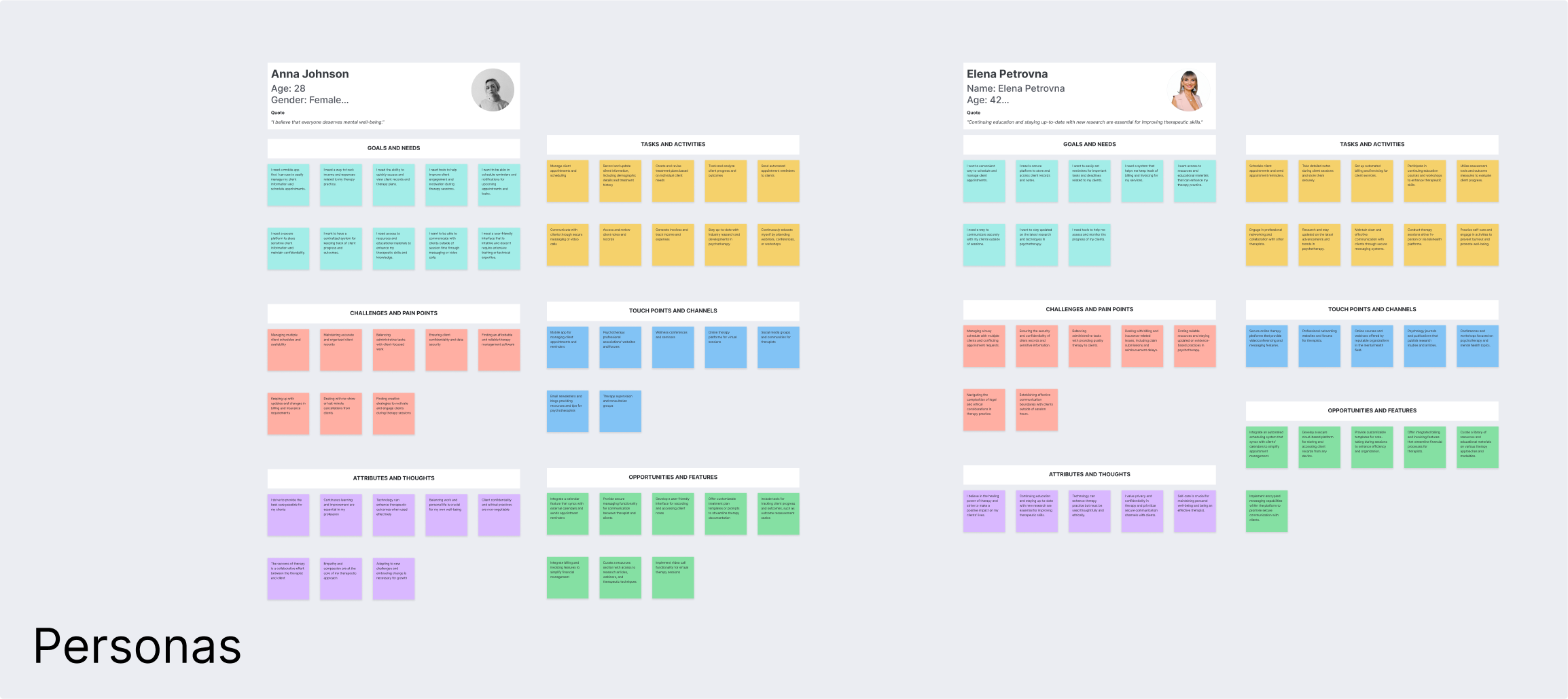
Research
Problem
Therapists frequently experience a decline in motivation. They feel there is no growth in their work, lack a clear structure for client descriptions and therapy journaling.
User Research
Conducted 5 interviews, created a CJM and JTBD to understand user tasks
Insights
The main issue was that therapists had to juggle multiple apps to address these tasks. Many therapists did not monitor their finances at all
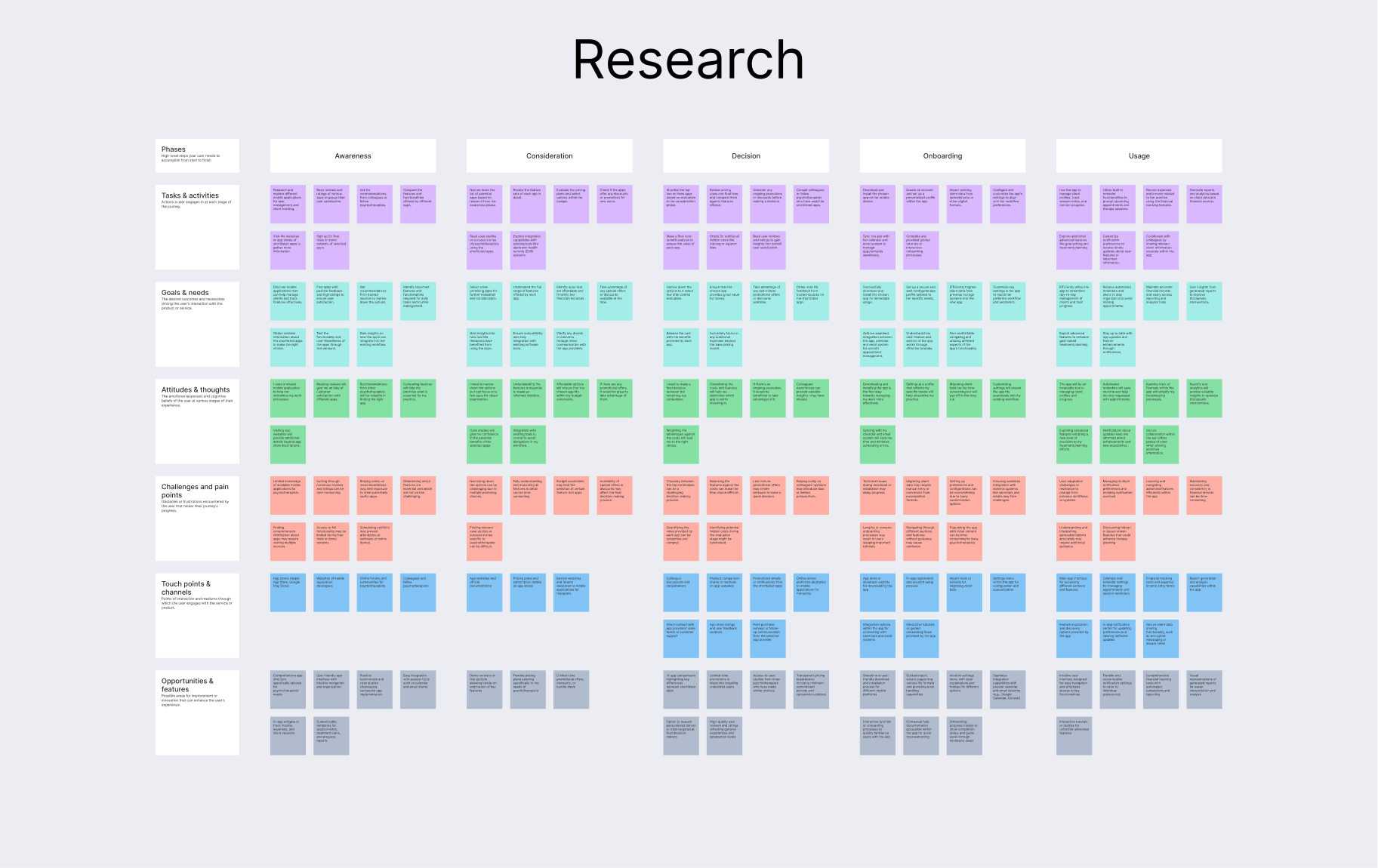
Development Process
Ideation
Initially, the main usage scenarios in the application were described. A database structure for the app was then created.
Prototyping
A template in Notion was developed to test hypotheses, partially mimicking the app interface to understand how the functionality would work and what additional screens were needed.
User Flow
After defining the exact user flow, the logic of the application was described. Each process was described from a logical point of view, drawn, and all interactions with the database were described.
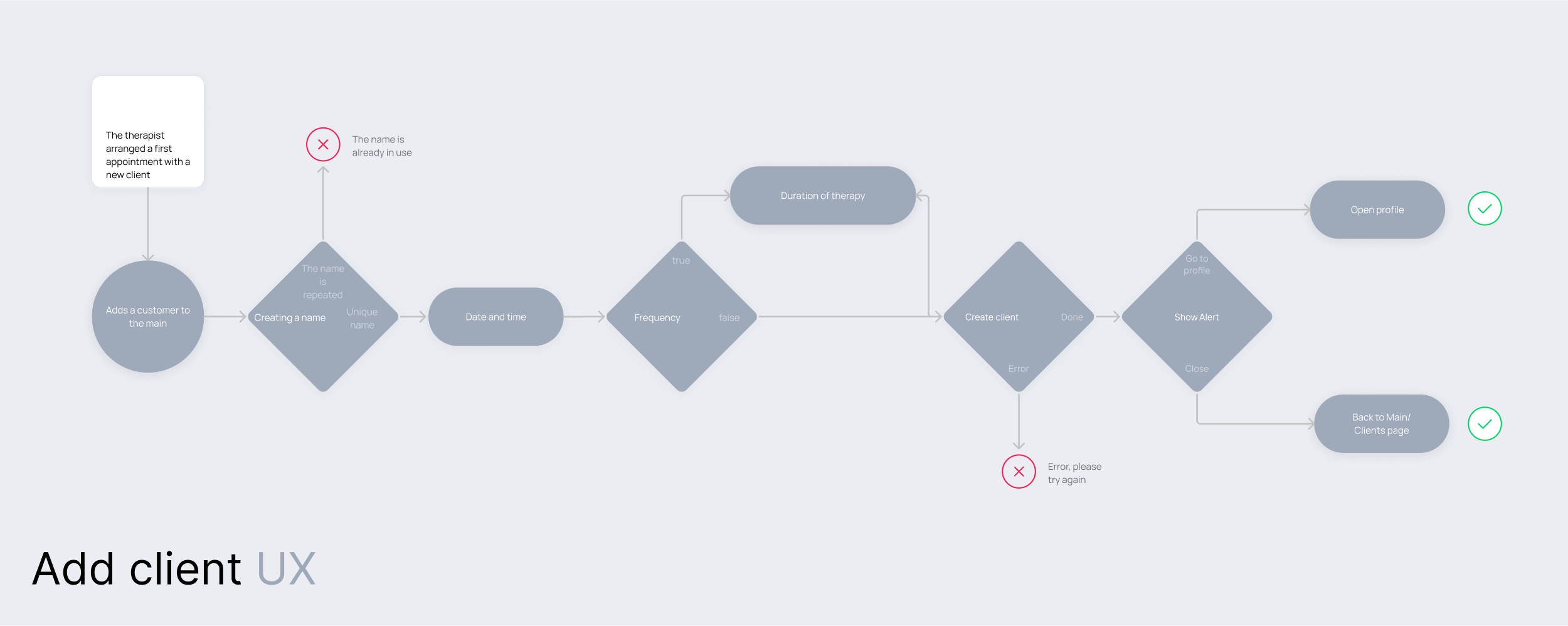
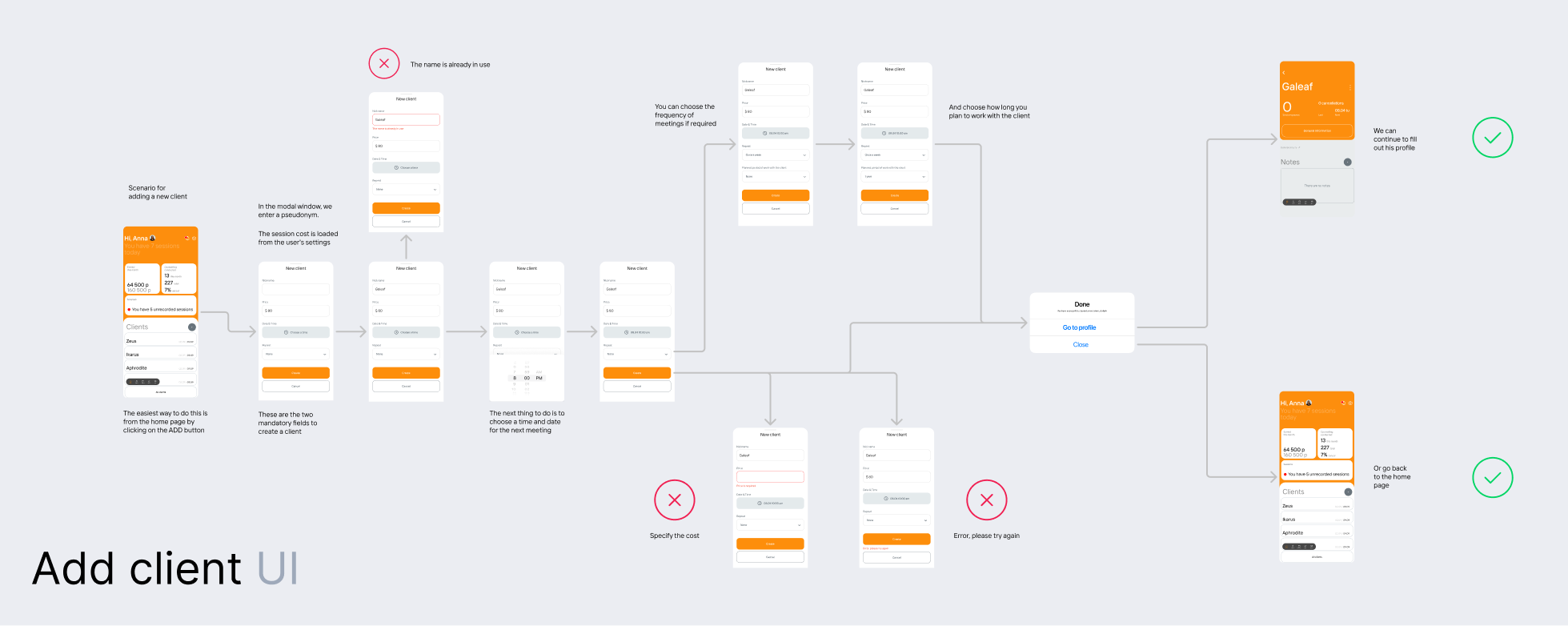
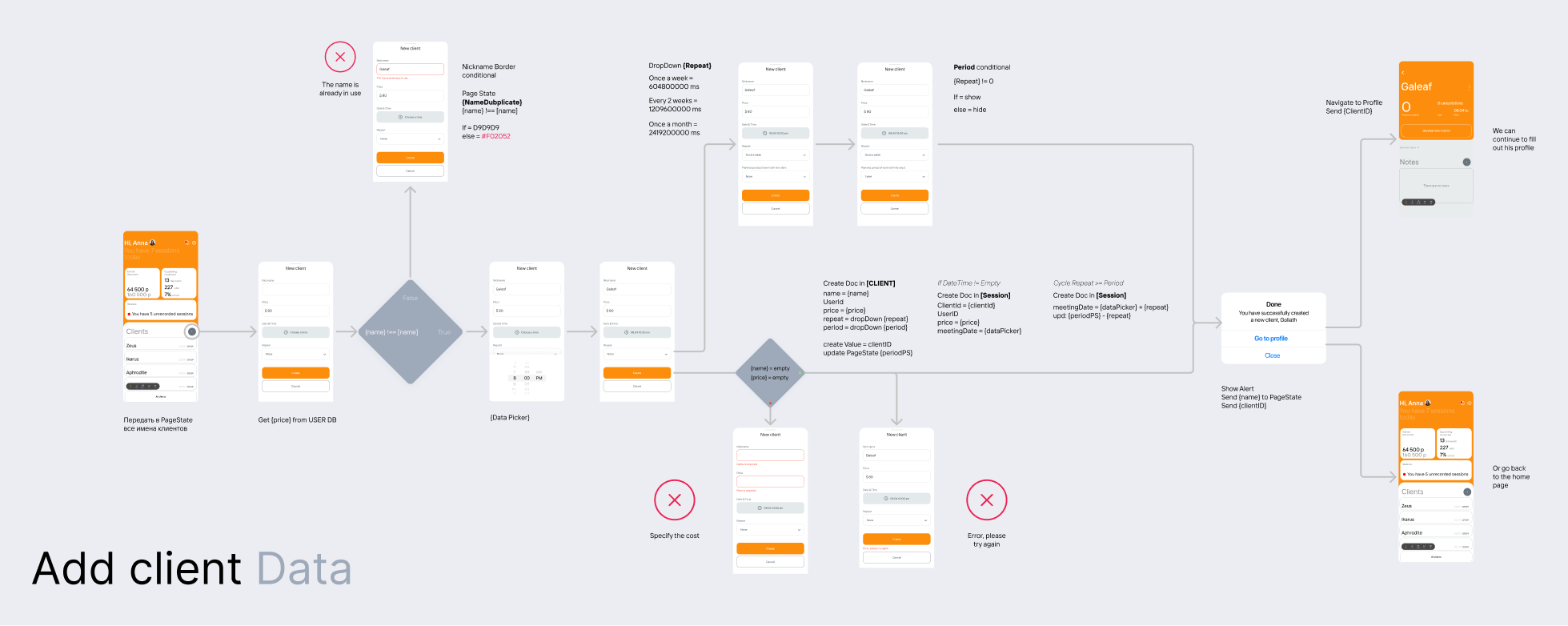
Implementation
Design
The application design development began, including drawing all screens and notifications. The entire database interaction logic was specified, detailing when local storage should be used and when server requests should occur.
Tools
Figma was used extensively, along with DevMode for deeper integration.
Development and Launch
The development was implemented using the FlutterFlow constructor
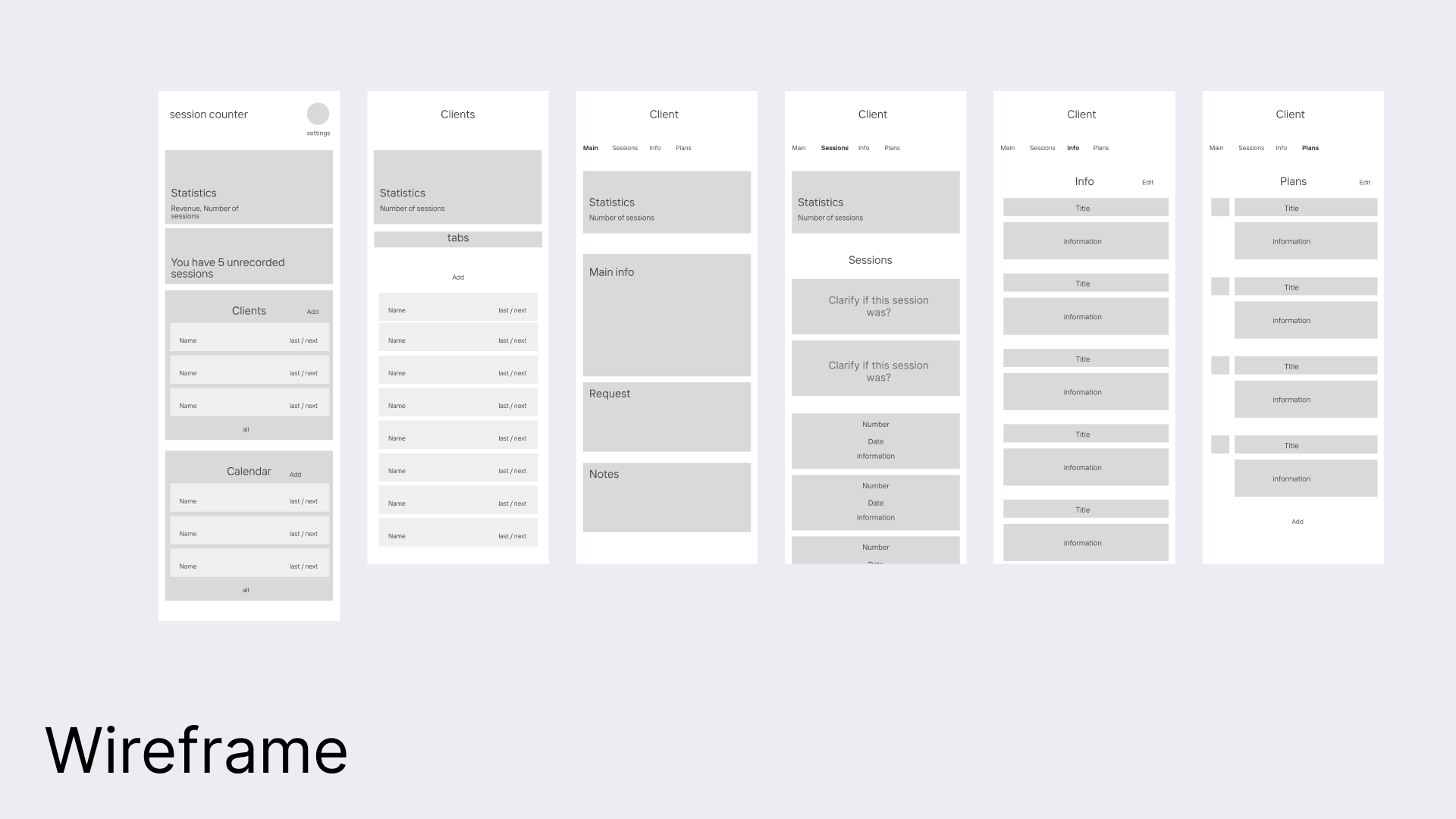
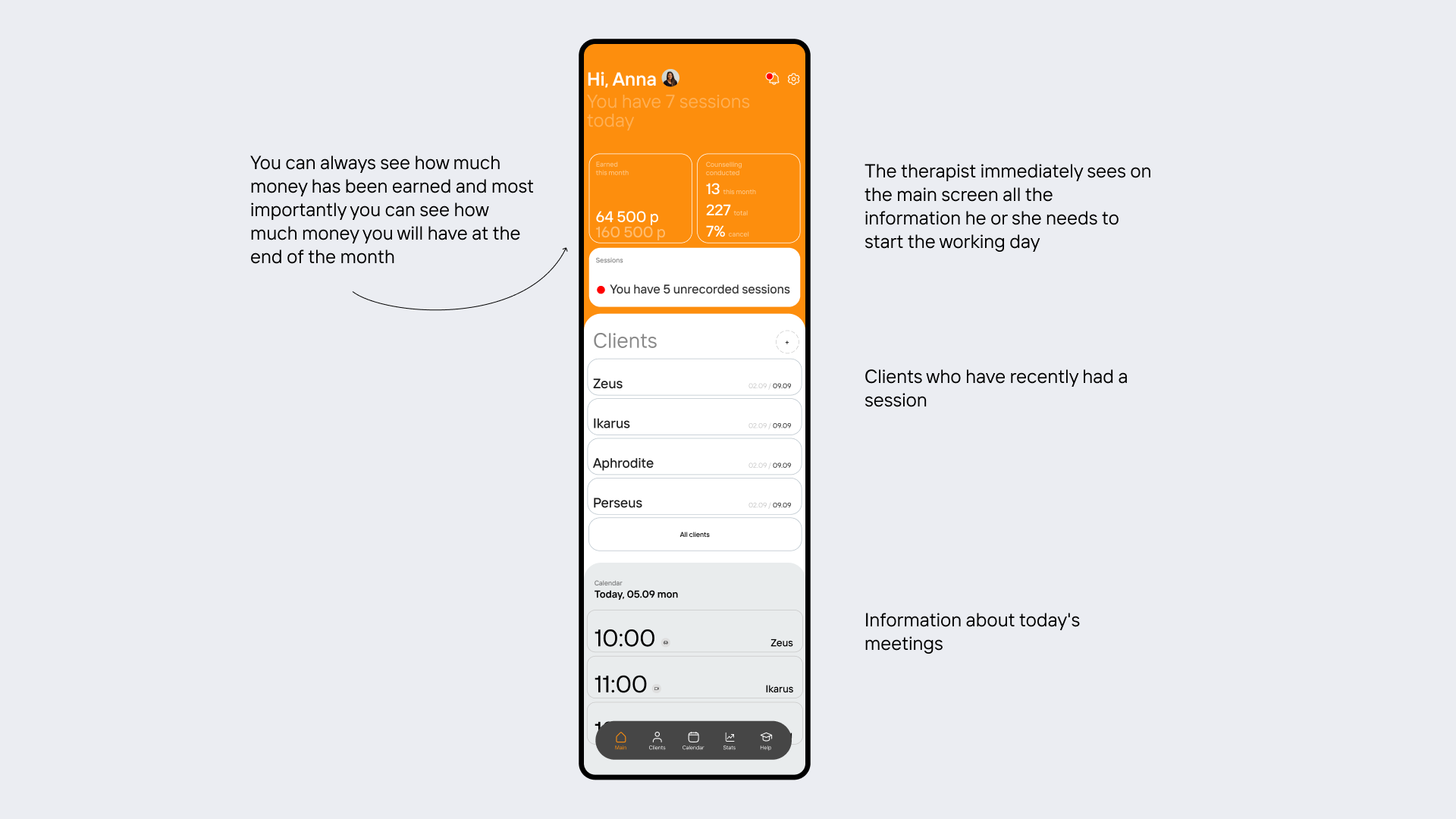
Jobs To Be Done (JTBD)
Manage clients in a single application
Context: The therapist wants to eliminate the need to use multiple apps for client appointments and calendar management.
Reason: Convenience and time savings.
Outcome: Reduced stress, increased work efficiency.
Reason: Convenience and time savings.
Outcome: Reduced stress, increased work efficiency.
Track finances and income
Context: The therapist wants to control their financial flows and income to better understand their financial situation.
Reason: Financial stability and planning.
Outcome: Confidence in income, improved financial planning.
Reason: Financial stability and planning.
Outcome: Confidence in income, improved financial planning.
Maintain motivation and track progress
Context: The therapist wants to see their progress and work dynamics to stay motivated and see the results of their efforts.
Reason: Maintaining high motivation and professional growth.
Outcome: Job satisfaction, feeling of professional growth.
Reason: Maintaining high motivation and professional growth.
Outcome: Job satisfaction, feeling of professional growth.
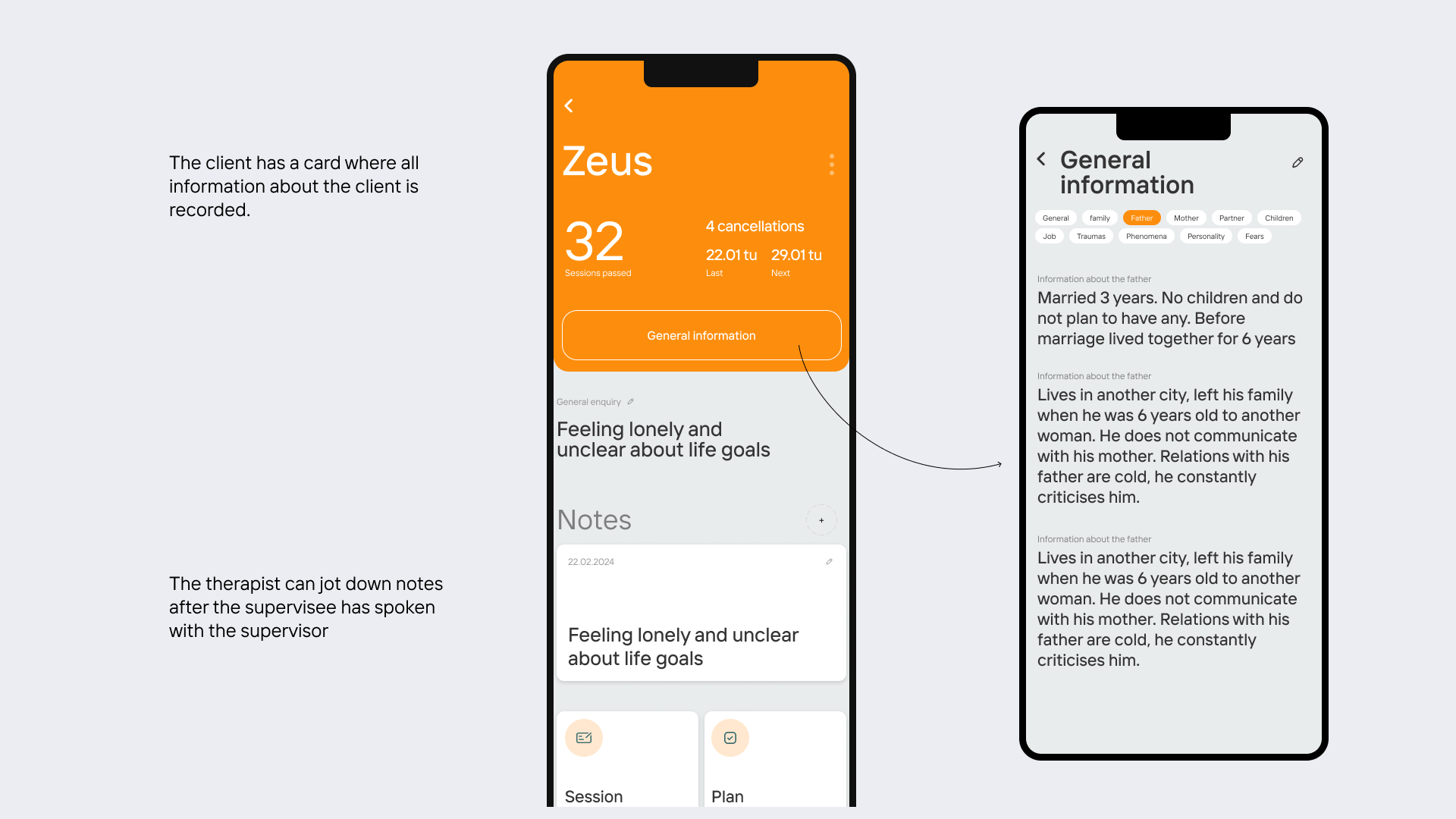
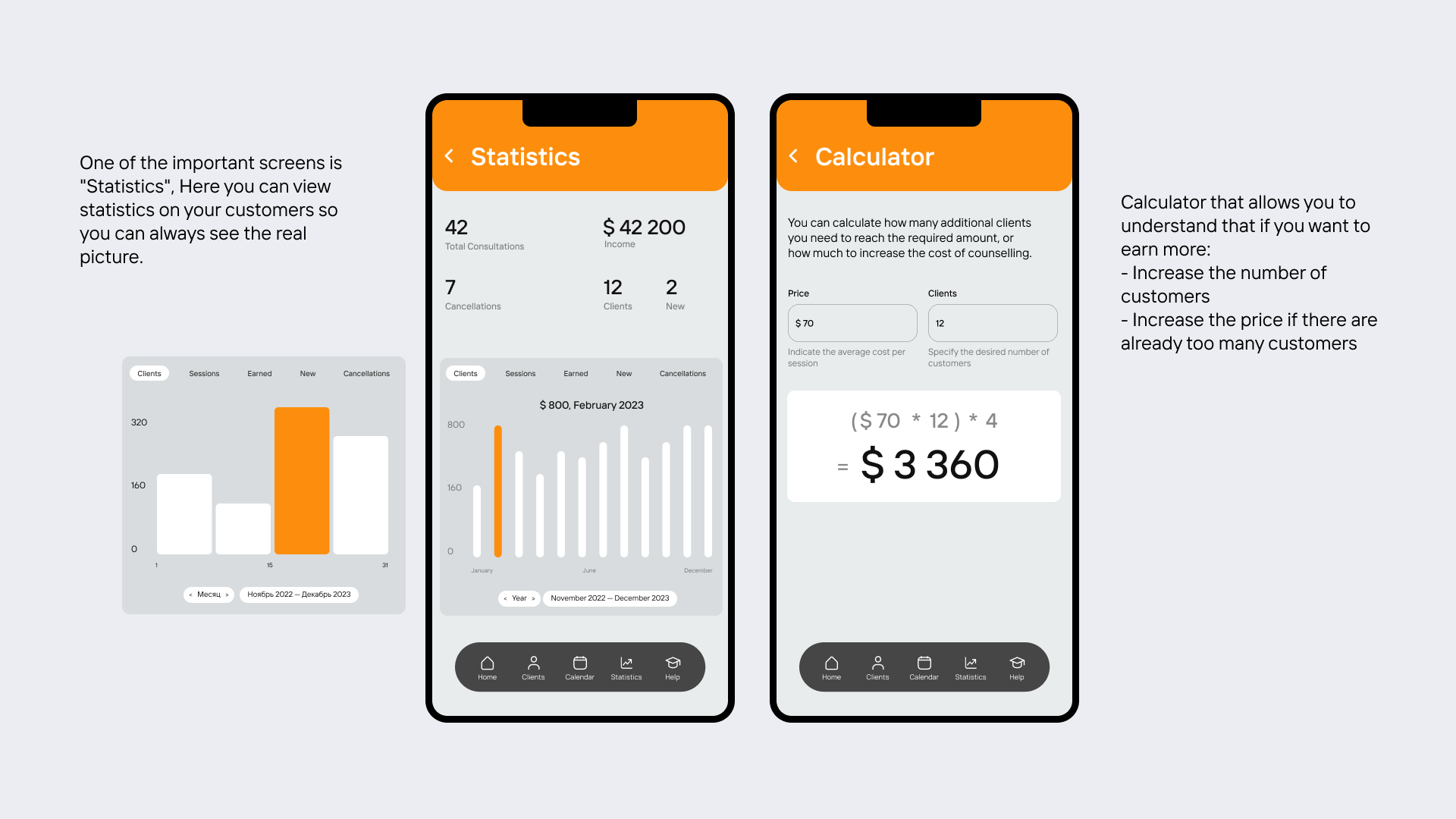
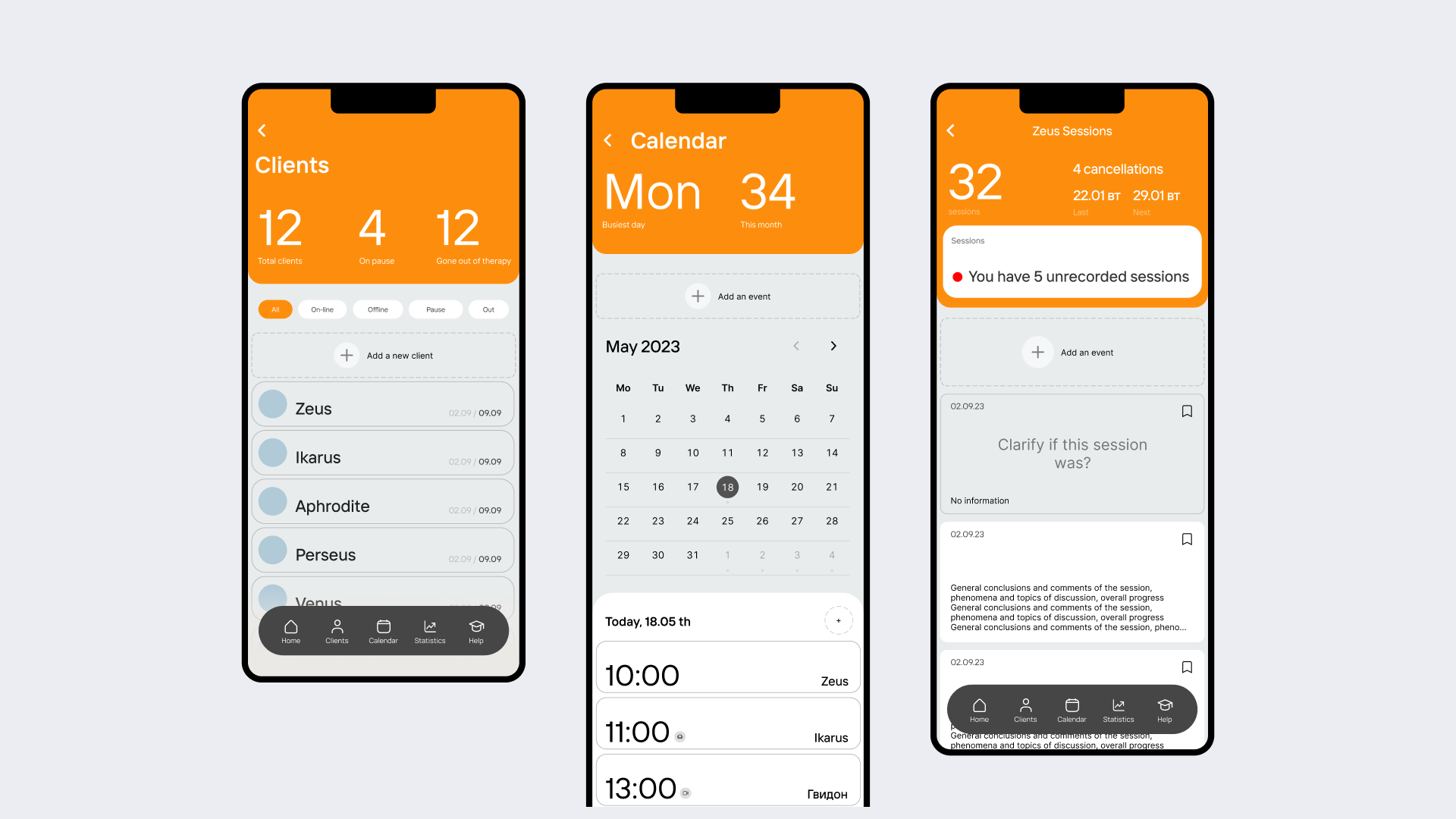
Results and Conclusions
Results
The application significantly improved therapists' client and financial management. User satisfaction increased by 22%, and therapists' motivation rose by 15%.
Conclusions
Integrating all necessary functions into one app significantly simplified therapists' work and improved their motivation.
Reflection
Improvements
In the future, it would be beneficial to add more analytics and reporting capabilities and integrate with popular calendar platforms.
Personal Achievements
Enhanced skills in working with CJM and JTBD, improved prototyping, and collaboration with development teams.

